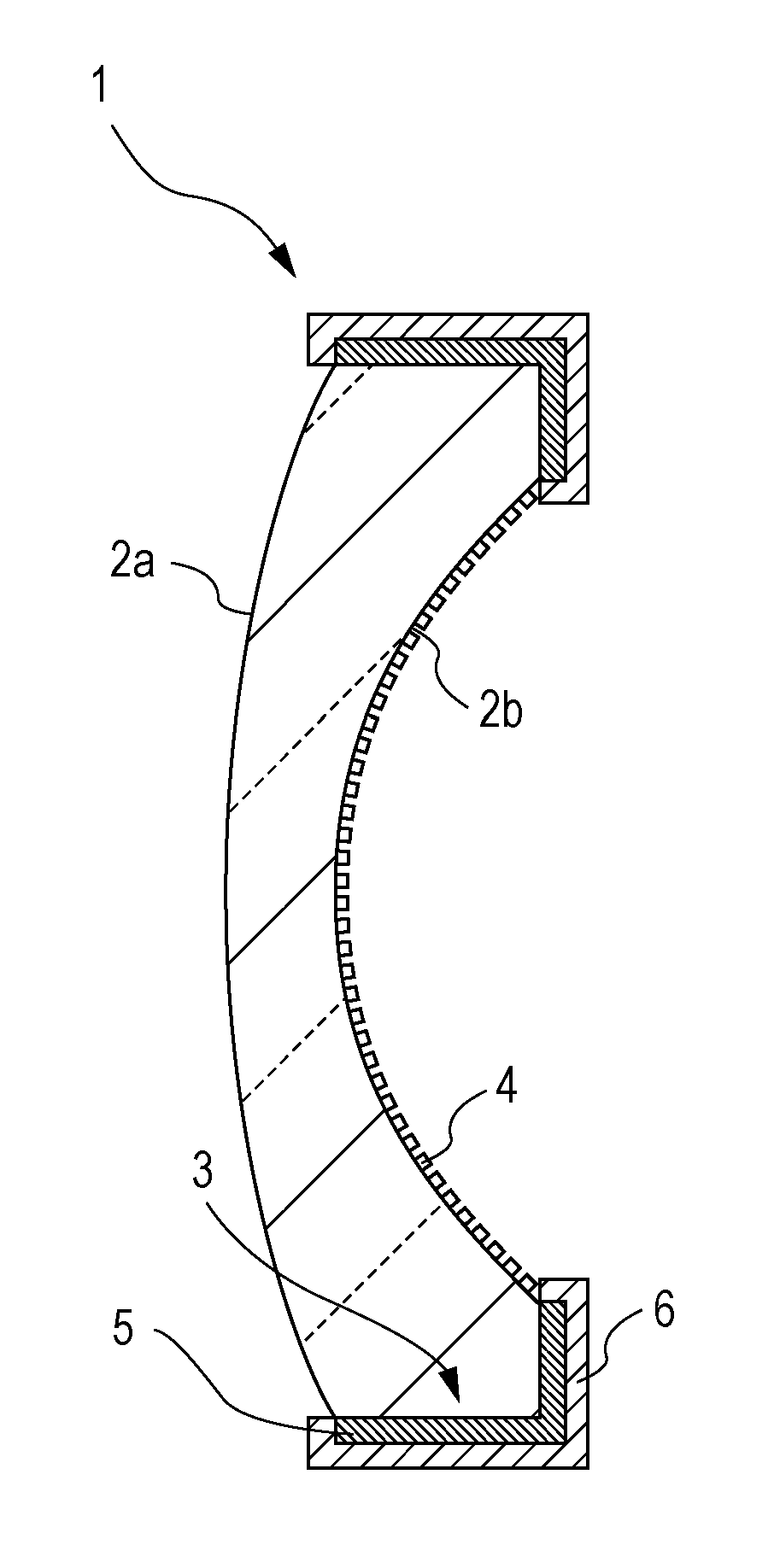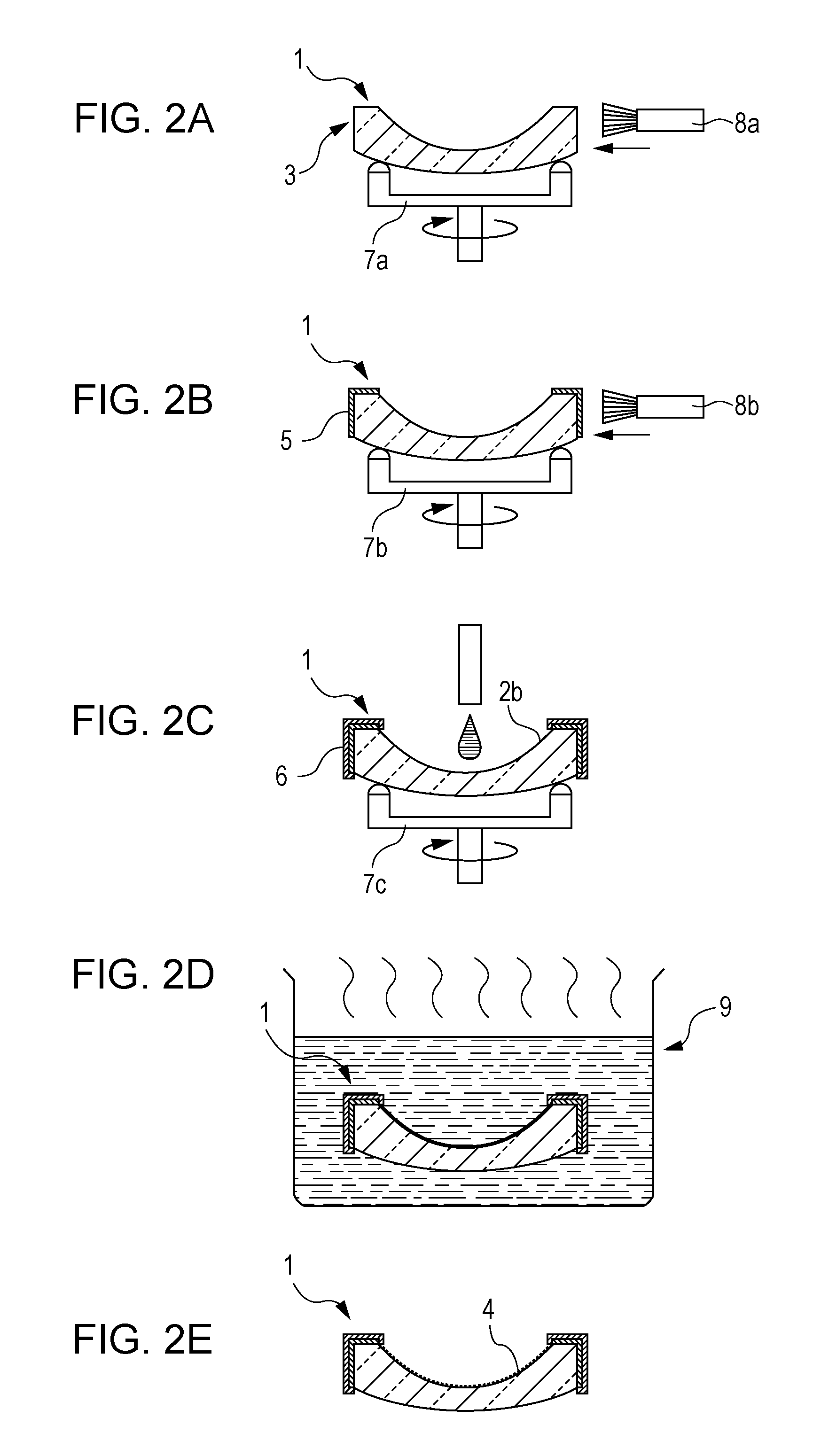Optical lens having sub-wavelength structure containing aluminum or aluminum oxide, method of manufacturing optical lens, and imaging optical system including optical lens
a technology of optical lenses and aluminum oxides, applied in the field of optical elements, can solve the problems of affecting the function and appearance of coatings during long-term use, affecting the efficiency of optically ineffective areas, and increasing the load on coatings, so as to improve heat resistance and flexibility
- Summary
- Abstract
- Description
- Claims
- Application Information
AI Technical Summary
Benefits of technology
Problems solved by technology
Method used
Image
Examples
example 1
[0044]FIG. 1 is a sectional view of an optical element, including an optically ineffective area coated with an opaque coating, according to an embodiment of the present invention. With reference to FIG. 1, reference numeral 1 represents the optical element, reference numerals 2a and 2b represent optically effective areas, reference numeral 3 represents the optically ineffective area, and reference numeral 5 represents the opaque coating. The optical element 1 is shown in the form of a lens. The opaque coating 5 is disposed on the optically ineffective area 3. The thickness of the opaque coating 5 is shown in an enlarged scale in FIG. 1 for ease of illustration.
[0045]In this example, a coating material for forming the opaque coating 5 was prepared by mixing eight parts by weight of a base compound, prepared by mixing an epoxy resin with an additive such as a black dye, available from Canon Chemicals Inc. under the trade name GT-7A; 1.26 parts by weight of a bisphenol-A epoxy resin, u...
example 2
[0050]An optical element including an optically effective area having a sub-wavelength structure disposed thereon and an optically ineffective area coated with an opaque coating was manufactured in substantially the same manner as that described in EXAMPLE 1 except that a coating material containing a phenol resin was not applied to the opaque coating and therefore a protective coating was not formed after the opaque coating was formed.
[0051]The optical element was subjected to substantially the same high-temperature, high-humidity reliability test as that described in EXAMPLE 1. The observation of the appearance of the resulting optical element showed that the opaque coating on the optically ineffective area had no change as compared to the untested opaque coating, was good, and had no functional problem.
example 3
[0052]An optical element including an optically effective area having a sub-wavelength structure disposed thereon and an optically ineffective area coated with an opaque coating was manufactured in substantially the same manner as that described in EXAMPLE 1 except that a coating material containing a particulate component with a small particle size of 1 μm or less and a base compound prepared by mixing a commercially available black dye with an additive was used.
[0053]The optical element was subjected to substantially the same high-temperature, high-humidity reliability test as that described in EXAMPLE 1. The observation of the appearance of the resulting optical element showed that the opaque coating on the optically ineffective area had no change as compared to the untested opaque coating, was good, and had no functional problem.
PUM
| Property | Measurement | Unit |
|---|---|---|
| temperature | aaaaa | aaaaa |
| temperature | aaaaa | aaaaa |
| temperature | aaaaa | aaaaa |
Abstract
Description
Claims
Application Information
 Login to View More
Login to View More - R&D
- Intellectual Property
- Life Sciences
- Materials
- Tech Scout
- Unparalleled Data Quality
- Higher Quality Content
- 60% Fewer Hallucinations
Browse by: Latest US Patents, China's latest patents, Technical Efficacy Thesaurus, Application Domain, Technology Topic, Popular Technical Reports.
© 2025 PatSnap. All rights reserved.Legal|Privacy policy|Modern Slavery Act Transparency Statement|Sitemap|About US| Contact US: help@patsnap.com



